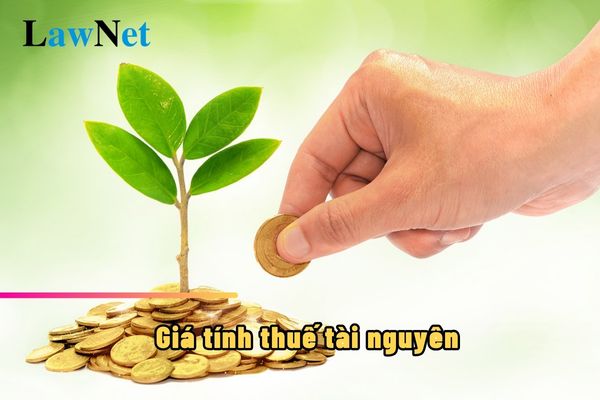Is the severance tax-liable price in Vietnam inclusive of value-added tax?
Is the severance tax-liable price in Vietnam inclusive of value-added tax?
Under Article 6 of Severance Tax Law 2019, the regulations on the tax calculation price are as follows:
Severance tax-liable prices
1. The severance tax-liable price is the exploiter's selling price of a unit of natural resource product, exclusive of value-added tax.
2. In case the natural resource's selling price cannot be determined yet. the severance tax-liable price shall be determined based on either of the following grounds:
a/ The regional market's actual selling price of a unit of natural resource product of the same grade, which must not be lower than the royally-liable price set by the People's Committee of a province or centrally run city (below collectively referred to as provincial-level People's Committee);
b/ In case the exploited natural resource contains different substances, the severance tax-liable price shall be determined based on the unit selling price and content of each substance, which must not be lower than the severance tax-liable price set by the provincial-level People's Committee.
3. In some cases, the severance tax-liable price shall be determined as follows:
a/ For natural water used for hydropower generation, it is the average selling price of commodity electricity:
b/ For timber, it is the selling price at the place of delivery; if the selling price at the place of delivery cannot be determined, the severance tax-liable price shall be determined based on the severance tax-liable price set by the provincial-level People’s Committee;
c/ For exploited natural resources which are not domestically sold but exported, it is the export price;
d/ For crude oil. Natural gas and coal gas. It is the selling price at the place of delivery. The place of delivery is a place agreed upon in the oil and gas contract under which the ownership over crude oil. Natural gas and coal gas is transferred to the contractual parties.
4. Provincial-level People’s Committees shall set specific severance tax-liable prices of natural resources for which unit selling prices of natural resource products cannot be determined, except crude oil. Natural gas. Coal gas. And natural water used for hydropower generation.
The Government shall detail this Article.
Thus, according to the above regulation, the severance tax-liable price in Vietnam is exclusive of value-added tax.
What is the severance tax-liable price for any natural resource of which the unit price is not determined because it contains various substances in Vietnam?
Under Clause 2, Article 6 of Circular 152/2015/TT-BTC:
- With regard to any natural resource of which unit price is not determined because it contains various substances
Taxable price is the selling price of each substance according to the total revenue from selling the resource in the month (exclusive of VAT), ratio of each substance approved by a competent authority, and sale of resources on the sale invoices corresponding to each substance.
Example 8: Enterprise E extracts 1,000 tonnes of ore, the ratio of each substance in the analyzed ore sample is: copper: 60%; silver: 0.2%; tin: 0.5%.
The taxable extraction quantity of each substance:
- Copper: 1,000 tonnes x 60% = 600 tonnes.
- Silver: 1,000 tones x 0.2% = 2 tonnes.
- Tin: 1,000 tones x 0.5% = 5 tonnes.
In the month, enterprise E sells 600 tonnes of ore for VND 900 million. Taxable price of each substance in the ore is determined as follows:
- Revenue from the sale of copper in the month: VND 900 million x 60% = VND 540 million
- Taxable price of copper: VND 540 million/360 tonnes
- When declaring and paying severance tax, the taxpayer shall pay tax on 600 tonnes of copper ore at the aforesaid taxable price and corresponding tax rate.
The taxable prices of silver and tin in 1,000 tonnes of ore extracted in the month are calculated similarly.

Severance tax-liable price in Vietnam (Image from Internet)
What is the severance tax rate for natural mineral water in Vietnam?
Pursuant to Article 7 of Circular 152/2015/TT-BTC:
Tax rate
1. The rates of severance tax on each type of resource extracted are specified on the severance tax schedule promulgated together with Resolution No. 712/2013/UBTVQH13 dated December 16, 2013 of Standing Committee of the National Assembly and its amendments (if any).
2. Tax rates on natural mineral water, natural hot water, bottled/boxed purified natural water, extracted natural water in some cases:
a) Natural mineral water, natural hot water, bottled purified natural water (including natural water in big bottles or tanks that can be divided into smaller bottles/boxes) apply the same rate of severance tax;
b) Natural water used for hydroelectricity generation, business/production that contains natural mineral water or natural hot water that, according to documents about design and technological process of production/service provision, have been determined by competent authorities as not used for producing/selling natural mineral water, natural hot water, bottled/boxed purified natural water, corresponding rates of severance tax shall apply according to their uses.
Thus, the severance tax rate for natural mineral water applies the same tax rate as bottled water.

